
Cherry Barb Aquarium and Fishes
Cherry Barbs are easy to care for and have a striking red coloration. In this care guide, we'll cover everything from basic tank requirements to breeding habits. Cherry Barbs require a minimum tank size of 20 gallons and prefer a pH of 6.0-7.0. They are peaceful and make excellent community fish, but they can sometimes be fin nippers.
:max_bytes(150000):strip_icc()/GettyImages-535401337-ab3b12e07f904b98a310d72db234677c.jpg)
Cherry Barb Fish Species Profile
No matter what you love, you'll find it here. Search Cherry Barbs and more. Looking for Cherry Barbs? We have almost everything on eBay.
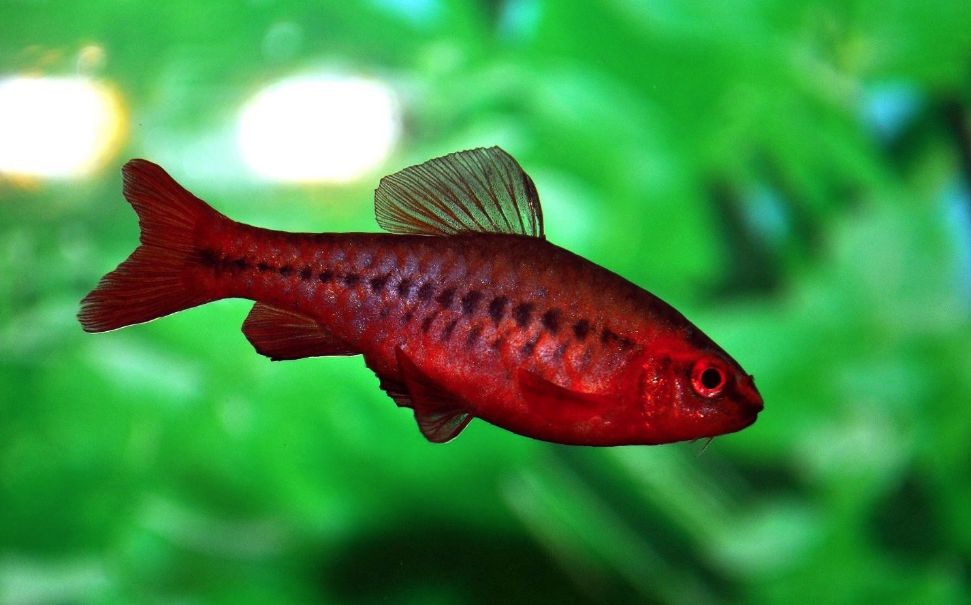
Cherry Barb Size, Care, Lifespan, Tank Mates MeeThePet
What Do Cherry Barbs Eat? In nature, these omnivores like to eat small bugs, micro worms, crustaceans, zooplankton, and even algae. They are not picky eaters, so provide them with a variety of dry, frozen, and live fish foods to make sure they do not lack any essential nutrients.

Red cherry barb juvenile in freshwater tropical aquarium Stock Photo Alamy
To breed cherry barbs, it's best to set up a breeding tank. The tank needs to be filtered and established one month in advance. This breeding tank should be filled with water from the cherry barb's normal tank. You want to add a sponge filter to the tank and a heater that's set to the same temperature as the main tank.

Cherry Barb 101 Care, Tank Mates, Diet, Breeding & More
The cherry-like red color is what makes this species a sight to behold, and this redness intensifies during spawning. It should be noted that there are striking differences between the colors of a male and a female Cherry Barb. The males are the ones that bear the aforementioned cherry red color.
:max_bytes(150000):strip_icc()/GettyImages-938498166-3379368141b9463c849f5b548ee41acb.jpg)
Cherry Barb Fish Species Profile
The cherry barb is a popular freshwater fish known for its bright red color. The cherry barb is an excellent addition to your community tank if you are looking for a schooling fish. An advantage of keeping this fish species is that they are easy to manage, even if you are a beginner.

Don't Buy A Cherry Barb Unless You Watch This First 10 Things You Should Know About Cherry Barb
Cherry Barbs are small, bright red fish belonging to the Cyprinidae family, known for their active and peaceful behavior. They make an excellent addition to various community tanks due to their compatibility with other species. As schooling fish, Cherry Barbs thrive in groups of six or more, adding a vibrant touch to your aquarium setup.
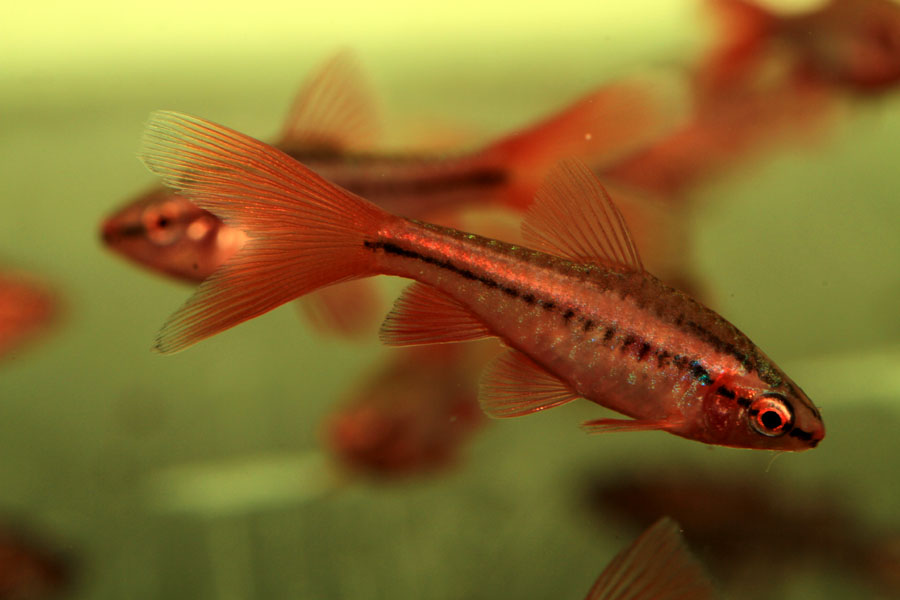
Cherry Barb Care Guide Tank Size, pH, Hardness and More
Top floating and large-leaved plants can help obscure the light if need be. Being a tropical fish, the cherry barb prefer to be in warmer temperatures of 72-78°F (22-25.5°C). They also prefer soft and acidic water with a pH of around 6.0. Water changes should be done at least once a week.
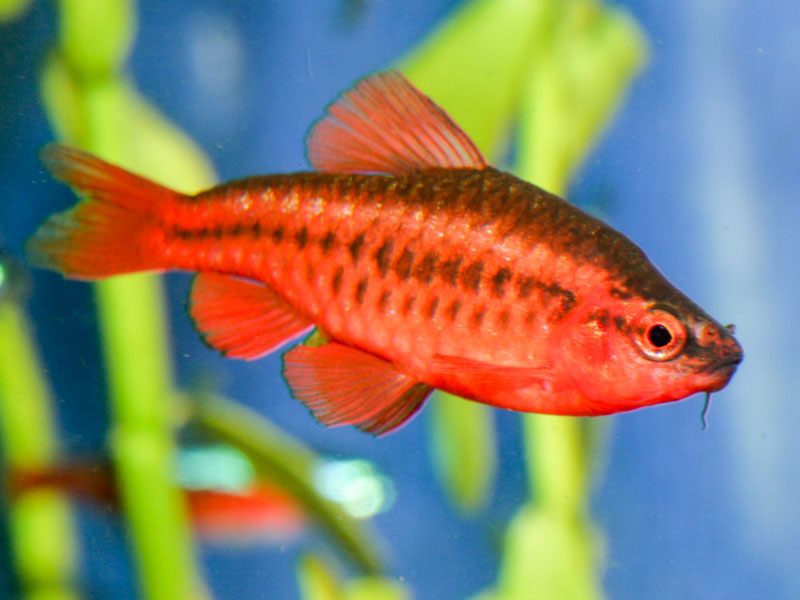
Conservation status of the Cherry Barb (Puntius titteya). Some Useful Info
Cherry Barbs are small fish, reaching an average size of around 2 inches (5 cm) in length. As mentioned earlier, males sport a striking red coloration, which intensifies during courtship or periods of high excitement. Their fins are also adorned with red hues, adding to their overall beauty.

Cherry Barb Care Guide, Breeding, Tank Size and Disease
Oranges and reds can be viewed on full display with the Cherry Barb. The male has a cherry red color, especially during spawning time, which contributes to its name. The females tend to be whiter in color and have a round stomach, compared to the slimmer bodies of the males. These barbs sport lateral brown lines that extend from head to tail.
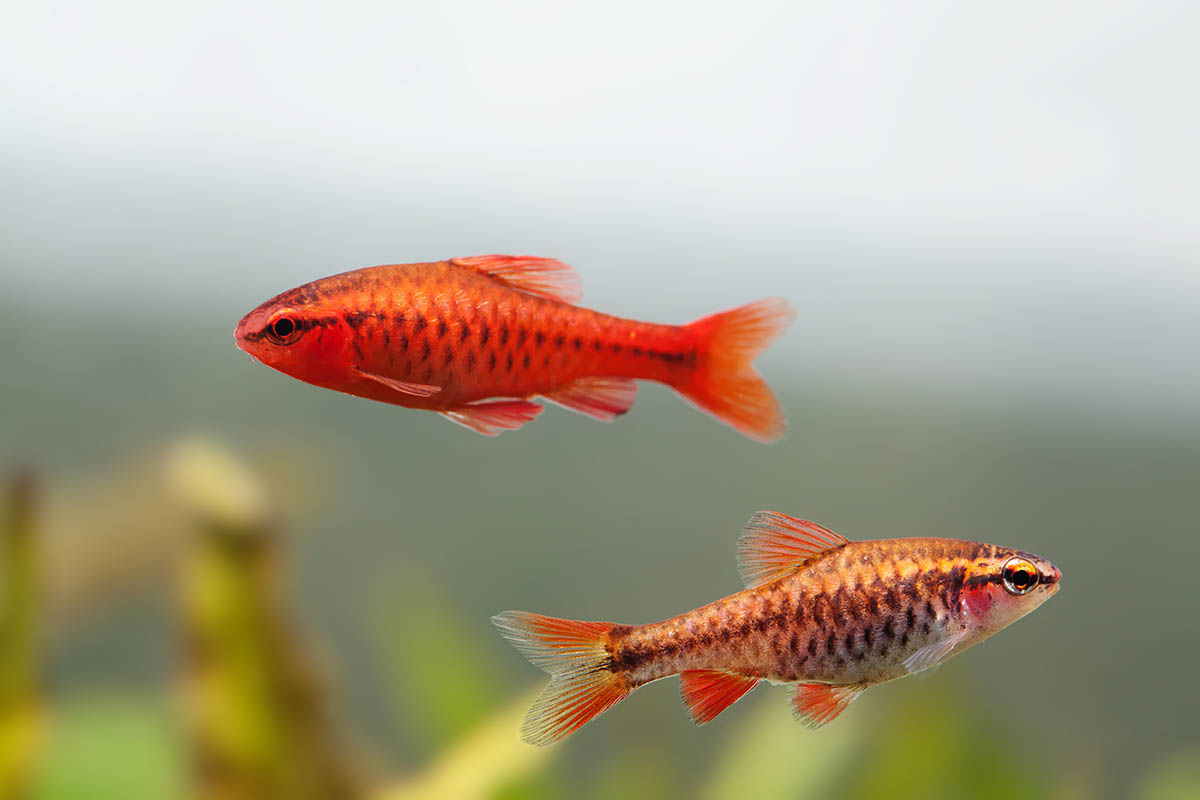
Cherry barb (Puntius titteya) Tetra Advanced Fishkeeper Blog
The Cherry Barb is a great freshwater fish that we've been recommending for years. If you've been in the aquarium scene for a while there's a good chance you know someone who's owned one. Here's why they're so common: This species is beautiful and fun to observe.

Cherry Barb Fish The Care, Feeding and Breeding of Cherry Barbs Aquarium Tidings
The cherry barb is a popular freshwater fish from the Cyprinidae family. It is known for its vibrant red coloration and distinctive dark stripe that runs down its body. These fish are active and peaceful, making them suitable for community aquariums. They are native to Sri Lanka and can also be found in parts of Mexico and Colombia.

Cherry Barb Diet Breeding Lifespan Size Care Guide Fishkeeping Forever
Red Males and Brown Females As their name suggests, Cherry Barbs got their name from their rich red color, like a cherry fruit. However, this color description does not apply to both sexes. The red body coloration is only for the males, while the females are brown.
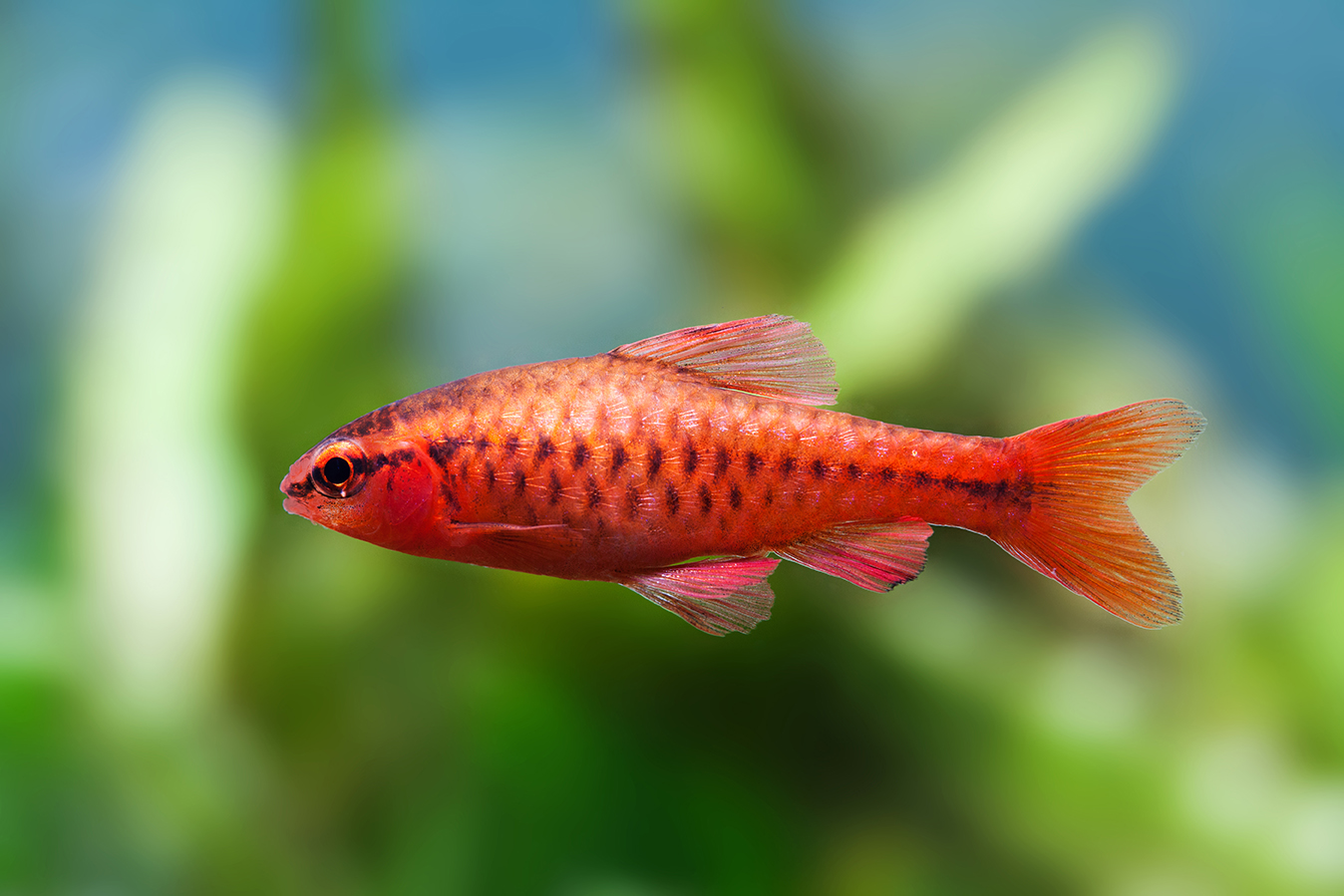
Cherry barb (Puntius titteya) Tetra Advanced Fishkeeper Blog
Male cherry barbs have brown-green backs and reddish or cherry-red - thus the name - bottoms with a brown-red lateral line. Female cherry barbs have a whitish abdomen with a yellow-gray back and brown-red lateral line like the males of the species. Their fins range from yellow in color to red.

Fish Red Cherry Barb Juvenile Swimming in Freshwater Tropical Aquarium Stock Photo Image of
The ideal water temperature for cherry barb is 73 °F to 81 °F (23 °C to 27 °C). Water pH. The ideal water pH for cherry barb is 7.2 to 7.5. Water Hardness. The ideal water hardness for cherry barb is 12 dGH. Tank size. The minimum tank size for cherry barb is 5 gallons, and the recommended tank size is 25+ gallons.
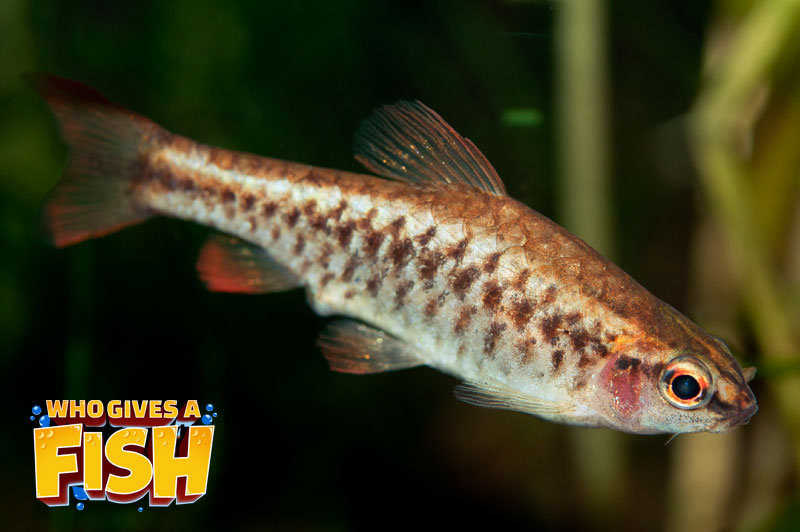
Cherry Barb Who Gives A Fish
The Cherry Barb, scientifically known as Puntius titteya, is a popular and brightly colored freshwater fish that has captured the hearts of fish enthusiasts around the world. With its deep red "cherry" coloration, this fish is a beautiful addition to any community tank. Build a Cherry Barb Habitat